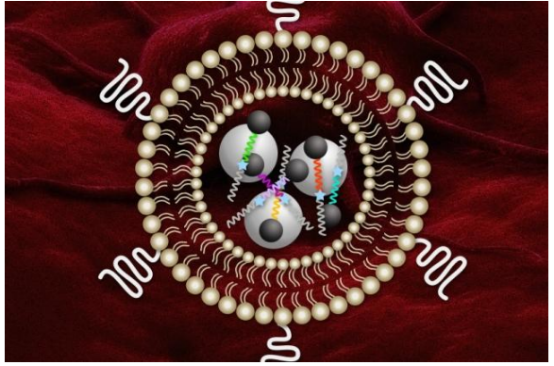What are the application scenarios of nano sensors?
Potential applications of nanosensors include the detection of drugs, pollutants, and pathogens as well as monitoring of manufacturing processes and transportation systems. By measuring changes in physical properties (volume, concentration, displacement and speed, gravity, electricity and magnetism, pressure or temperature), nanosensors can distinguish and identify certain cells at the molecular level in order to provide drugs or monitor the development of specific parts of the body.
According to the type of signal transduction, nanosensors are mainly divided into optical, mechanical, vibration and electromagnetic categories. These types of sensors will be reflected in the following application notes.
Medical biology
An example of a nanosensor involves using the fluorescence properties of cadmium selenide quantum dots as a sensor to find tumors in the body. However, the disadvantage of cadmium selenide spots is that they are highly toxic to the body. As a result, researchers are investigating alternative points made of another less toxic material while still retaining certain fluorescent properties. In particular, they have been studying the special benefits of zinc sulfide quantum dots. Although their fluorescence is not as good as cadmium selenide, they can be enhanced with other metals including manganese and various lanthanides. In addition, these newer quantum dots emit more fluorescence when they bind to target cells.
Another application of nanosensors involves the use of silicon nanowires in IV lines to monitor organ health. Nanowires are sensitive to detecting trace biomarkers, which diffuse into the IV line through the blood and can monitor kidney or organ failure. These nanowires will allow continuous biomarker measurement, which provides some advantages over traditional biomarker quantitative assays (such as ELISA) in terms of time sensitivity.
Nanosensors can also be used to detect contamination in organ implants. Nanosensors are embedded in the implant and detect contamination in cells surrounding the implant through electrical signals sent to the clinician or healthcare provider. Nano sensors can detect whether cells contaminated by bacteria are healthy and inflamed.
Currently, due to insufficient understanding of the adverse effects of nanosensors and the potential cytotoxic effects of nanosensors, there are strict regulations on the formulation of standards for nanosensors used in the medical industry. In addition, there may be high raw material costs, such as silicon, nanowires, and carbon nanotubes, which hinder the commercialization and manufacturing of nanosensors that need to be scaled up. In order to alleviate the shortcomings of cost, researchers are studying the manufacture of nano sensors made of more cost-effective materials. Due to the small size of the nano sensor and the sensitivity to different synthesis techniques, the reproducible production of the nano sensor also requires high precision, which will cause other technical difficulties.

In addition, optical nanosensors have established themselves as excellent sensing technologies in biological applications. This is especially true in biological imaging, where nanosensors can measure the fluorescence of molecules with high sensitivity. Optical nanosensors contain nanomaterials with non-toxic receptors attached to the surface, so they can detect optical changes in the environment. In addition to detecting fluorescence, optical nanosensors can also be used to monitor ion concentration, toxicity levels in the cell environment, and monitor any unwanted interfering substances.
This article is from Allicdata Electronics Limited which offer electronic components, semiconductors, antennas, capacitors, connectors, diodes, transistors, IC,resistors. For more product information, please go to the website to get it.

